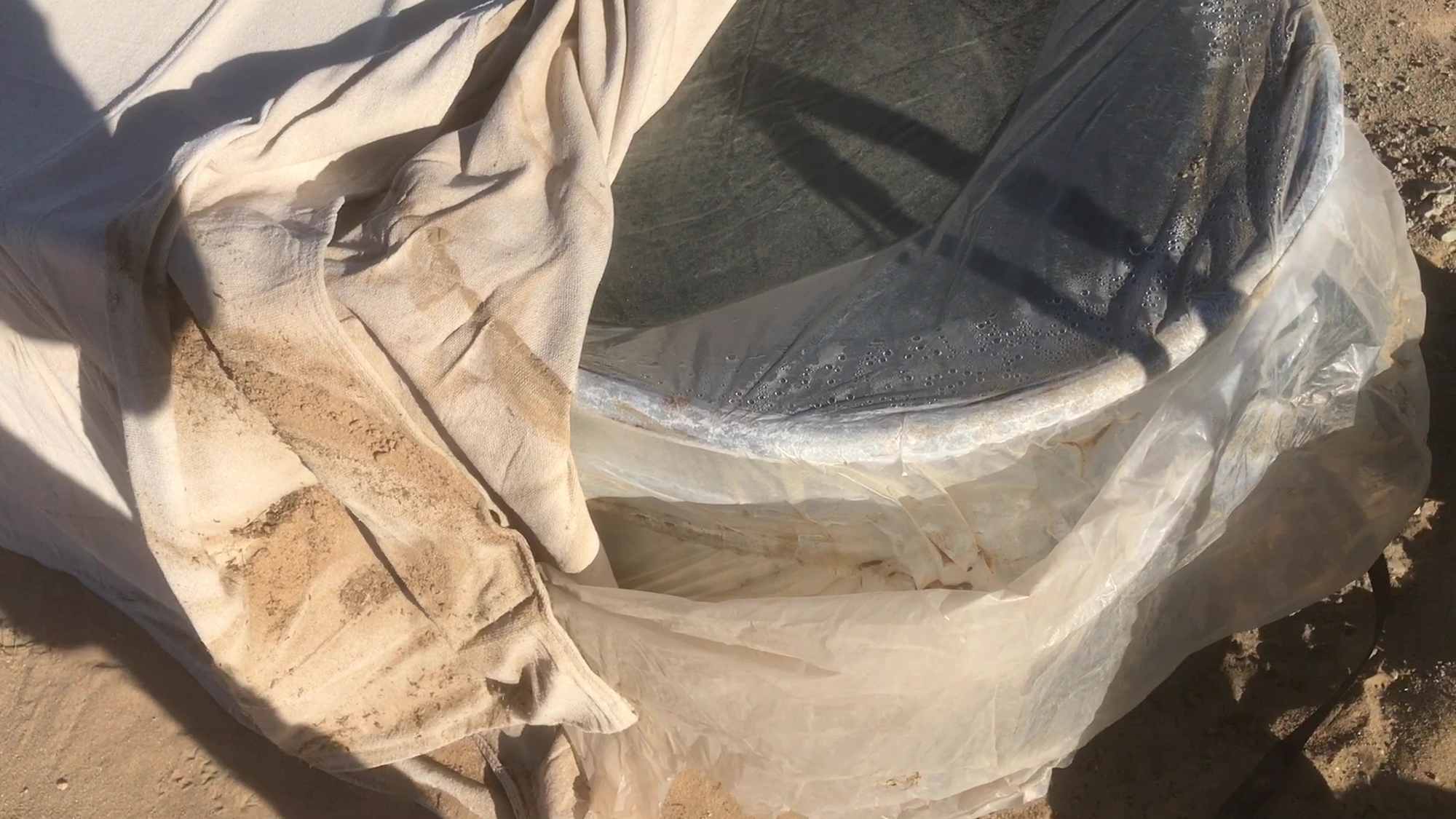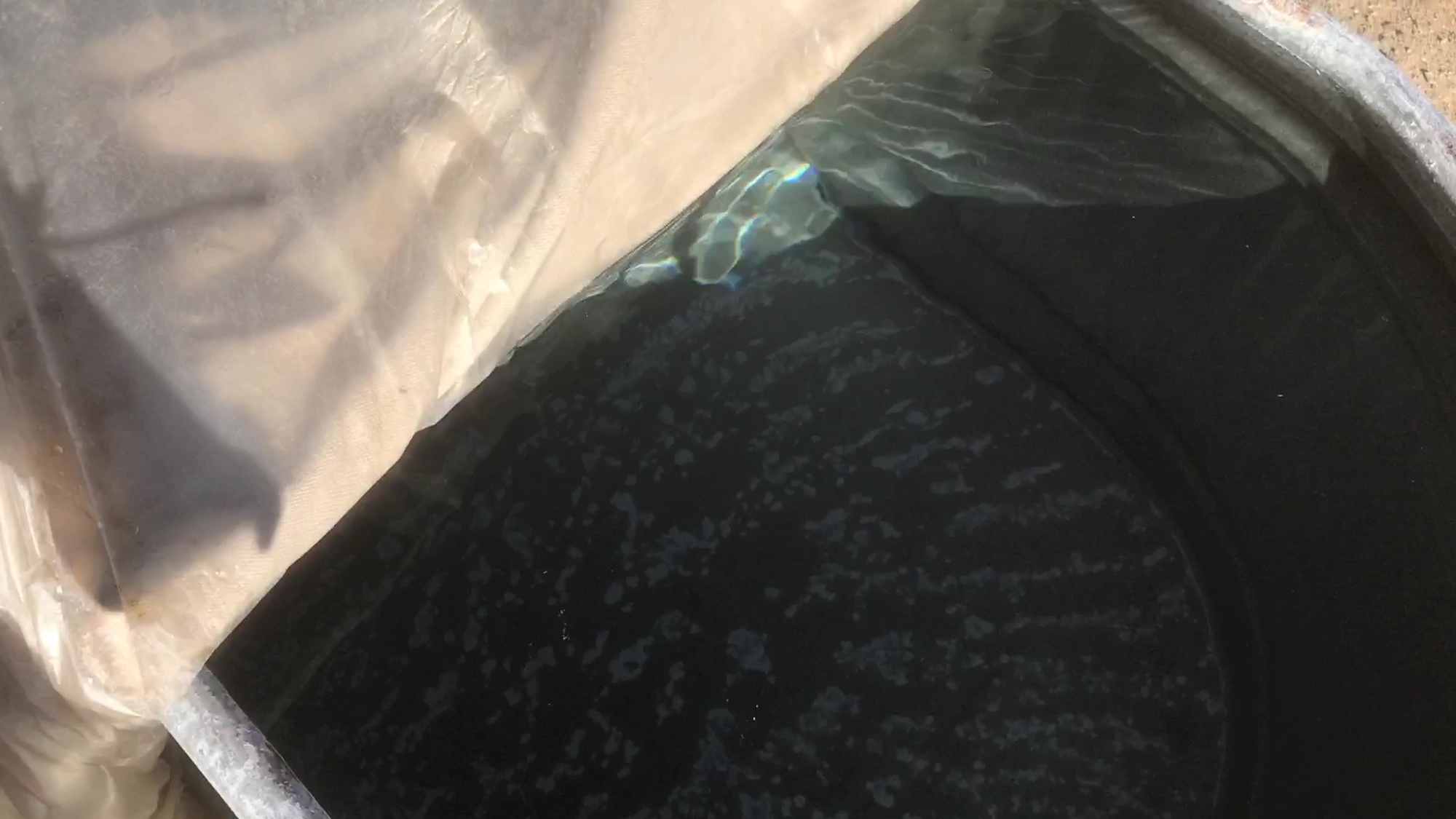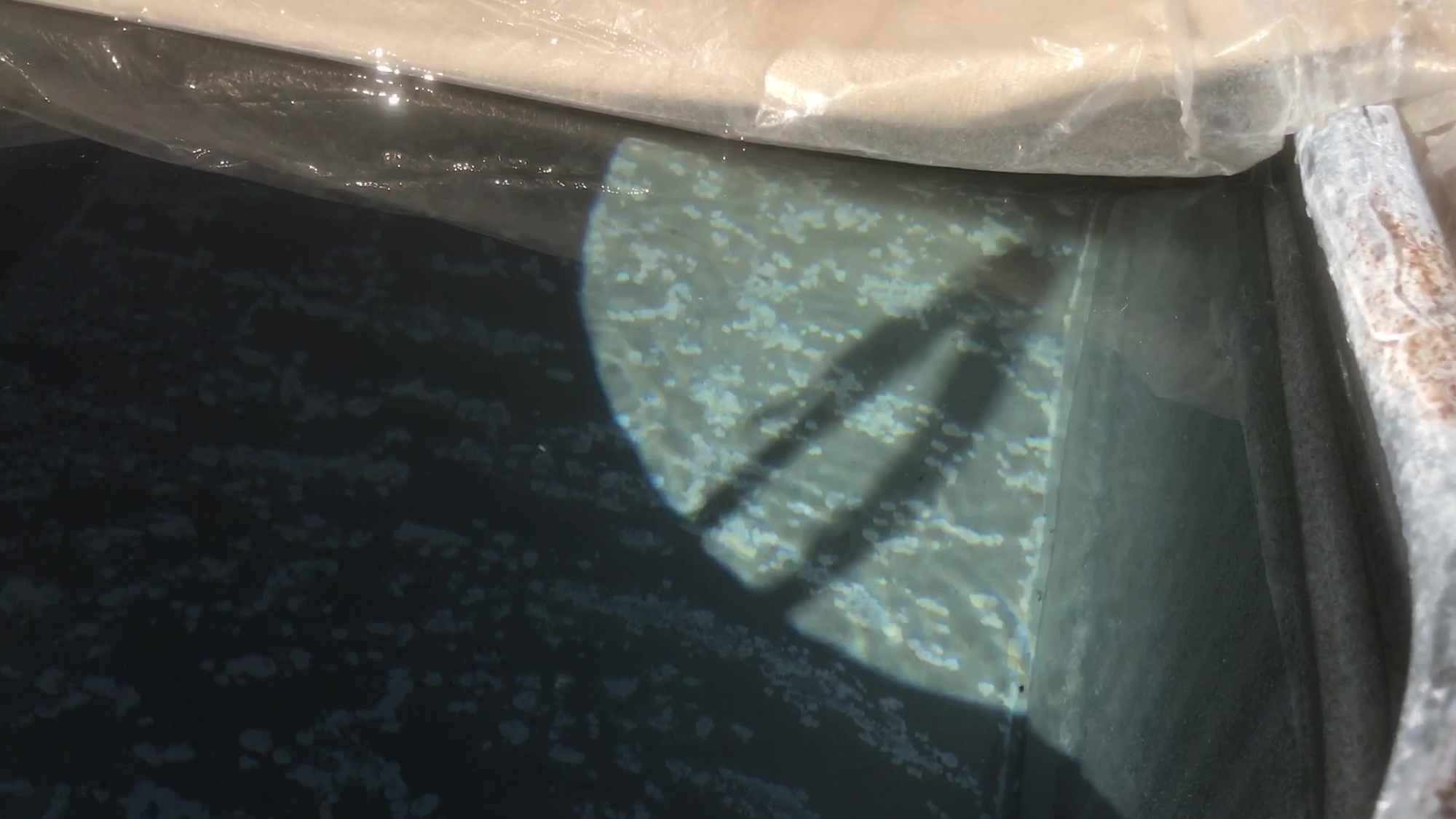
01 Lifting Canvas Shade Cloth From Rain Water Storage Stock Tank

02 Lifting Plastic Sheeting Evaporation Barrier From Rain Water Storage Stock Tank

03 Evaluating Almost 100 Percent Effectiveness Of Galvanized Tank Rain Water Storage Experiment
Rain Water Storage Galvanized Stock Tank One Year After Covering With Evaporation And Shade Barriers
It was a big gamble to put my water supply to the test by phasing out plastic water storage tanks in favor of galvanized stock tanks. As with all areas of life, I'm trying to replace plastic with natural and non-toxic materials in my water supply systems. It's not controversial at this point how dangerous micro-plastics can be to personal and ecosystemic health, the question becomes, who alternatives are there any more that are affordable and available. The pre-plastic solutions like wood barrels, glass jugs, and many others types of more rustic containers are out of mass production and can be very expensive vintage boutique items. In the absence of affordable more rustic options, I decided to go with the standard livestock watering tanks. The only issue is that, I need them to store water long term, I don't have tap water from the city or from a well. I can't just refill the tanks as the water evaporates. I need the water to not evaporate as I'm filling them with rain water that I catch in large tarps. The design that I decided to roll the dice on was simple enough. It did require some plastic but at least it would be an extremely minimal amount. Basically an evaporation barrier to cover the top of the tank, which was plastic sheeting. Then to protect that plastic sheeting from disintegrating in the desert sun, I decided to cover it with a layer of canvas drop cloth. I then used a ratchet strap to secure both the plastic sheeting and the canvas drop cloth to the outsides of the stock tank. I thought I'd need to have a layer of hardware cloth, or sheet of plywood, or something to secure the tops from critters wanting to breach it, but I got lucky and not even the coyotes have bothered them at all. So what's in these photos is the unveiling of a full tank one year later after it was first filled.
There's a bit of corrosion at the very top, but I've decided that I can live with that for now. It makes sense that at the edge of the materials where there's a lot of condensation from trapped evaporation, there's going to be more loss of the zinc which the galvanization process provides to protect the metal beneath it. The main things that made it feel like a success was that virtually none of the water escaped, it wasn't breached so there was no debris in it, and it just appeared that a bit of sand dust made its way to the bottom of the tank, but other than that it was almost crystal clear.
Ideally I'd have the materials on hand to make custom water proof lids for these units. It'd be great to have a thick sheet of glass and a rubber washer of sorts beneath. That would make for a great view of the water and even possible interesting lighting effects. For now, until I can score those materials, I'll continue with this pattern and hope it continues to hold up as long as possible. What's great about these tanks is that they can hold hundreds of gallons of water, but when they're empty they're light enough to be safely moved around by one person. I've decided that with my lone wolf survivalist lifestyle, I don't want to own anything that I don't already own, that I can't move easily without putting my back or my overall safety at risk. So lots of small tanks are better than one big one. This also makes it easily to mobilize and relocate if or when the could be necessary. I'm feeling like the gamble I made on these tanks has paid off. I'd be happy with galvanized trash cans that are made to be water proof. They do have lids of course, but so far I've not yet found a reliable source of such cans. They would make a lot of sense to phase into if I can find them in the future.